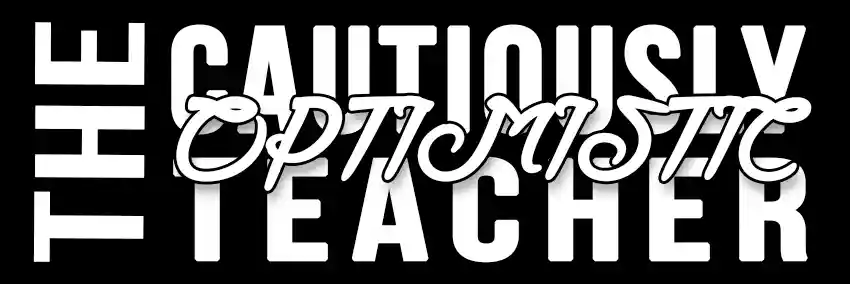Unlocking the Secrets of Motivation and Flow Lesson Plan
In this flow lesson plan, we’re embarking on a journey to discover what fuels our actions and how we can harness the power of our inner drive to achieve greater satisfaction and success in everything we do. Through understanding the concepts of extrinsic and intrinsic motivation, and the magical state of flow, we aim to inspire students to find and follow their passions, leading to a more fulfilling and motivated life. Get ready to explore the forces within you that push you forward, and learn how to tap into them to unlock your full potential.
Learning Goals
- I will understand the concept of flow and identify activities that lead me to experience this state.
- I will develop strategies to enhance my intrinsic motivation and increase my chances of experiencing flow in my daily activities.
- I will recognize the importance of intrinsic motivation and flow in achieving long-term satisfaction and resilience.
Materials
Discovering Motivation and Flow
The Flow Experiment
The Flow Journal
Process
- Read the article.
- Answer the content questions following the motivation and flow article.
- Complete the Flow Experiment and Flow Journal activities.
- The Flow Experiment: In small groups, students will choose an activity they believe could induce flow. They will then engage in this activity, making sure to minimize distractions, set clear goals, and adjust the challenge level to match their skills. Afterward, they will discuss as a group whether they experienced flow and what factors contributed to or detracted from the experience.
- Flow Journal: Over the course of a week, students will keep a journal of moments when they felt “in the zone” or experienced flow. They will note the activity, the duration of the flow state, and what they think contributed to entering this state.
Discovering the Power of Motivation and the Magic of Flow
Introduction to Motivation: Your Inner and Outer Drivers
Imagine you’re standing at the start line of a race. What makes you want to run? Is it the shiny medal waiting at the finish line, or the personal satisfaction of knowing you did your best? This is where the story of motivation begins, with two main characters: extrinsic and intrinsic motivation.
Extrinsic Motivation: The External Cheerleader
Extrinsic motivation is like having a cheerleader outside of you, encouraging you to do something because of what you’ll get in return. This could be a trophy for winning a competition, a good grade for acing a test, or even praise from your friends and family for a job well done. It’s all about the rewards and recognition from the outside world. While this type of motivation can be powerful and get you moving, it’s like a candy bar—providing a quick energy boost but not always sustaining you for the long haul.
Intrinsic Motivation: The Inner Flame
Now, let’s talk about intrinsic motivation. This is the flame that burns inside you, driving you to do things for the sheer joy and satisfaction they bring. It’s not about the trophy or the grade but about the love of the game, the excitement of learning something new, or the personal challenge of pushing your limits. When you’re intrinsically motivated, you’re running the race even when no one’s watching, simply because it makes you feel alive and fulfilled.
Why Intrinsic Motivation Wins the Race
While extrinsic rewards can give you a quick start, finding your intrinsic motivation is like discovering a renewable energy source within you. Here’s why it’s a game-changer:
Long-lasting Drive: Intrinsic motivation keeps you going long after the external rewards fade. It’s the difference between reading a book because you love the story and reading it just to pass a test.
Greater Satisfaction: Achieving a goal is always nice, but the journey itself is rewarding when you’re intrinsically motivated. This deep satisfaction can lead to a happier, more fulfilled life.
Enhanced Learning and Creativity: When you’re motivated by genuine interest and enjoyment, learning becomes easier and more fun. You’re also more likely to think creatively and solve problems in innovative ways.
Resilience: Intrinsic motivation can make you more resilient to challenges and setbacks. Since your motivation comes from within, you’re less likely to give up when things get tough.
The Magic of Flow: Being “In the Zone”
Have you ever been so absorbed in an activity that you lost track of time? Maybe you were drawing, playing a sport, or writing a story, and everything around you faded away. This magical state is called “flow,” a concept introduced by psychologist Mihaly Csikszentmihalyi. Flow happens when you’re fully engaged in a challenging activity that matches your skills. It’s like a perfect match between what you’re doing and your capabilities, creating a feeling of effortless concentration and enjoyment.
How to Find Your Flow
- Choose activities that challenge you but are still achievable. Flow happens in the sweet spot between boredom and anxiety, where the task is neither too easy nor too hard.
- Set clear goals. Knowing what you want to achieve in an activity helps you focus and gives you a sense of direction.
- Seek feedback. Understanding how you’re doing as you go can help adjust your actions and maintain your flow state.
- Minimize distractions. To achieve flow, you need to give the task your full attention. Find a quiet space where you can concentrate without interruptions.
Why Flow Matters
When you’re in a state of flow, you’re more productive and happier. Flow provides a sense of accomplishment and mastery over your skills, boosting your self-esteem and well-being. It’s also a sign that you’re engaging in activities that align with your intrinsic motivations, doing things that truly resonate with who you are.
Conclusion: Lighting Your Inner Flame
Understanding and tapping into your intrinsic motivation and finding your flow are key to achieving success and enjoying the journey there. By focusing on what genuinely interests and excites you, you unlock a powerful force that can drive you towards your goals with joy and resilience. Remember, the most rewarding achievements are your own personal aspirations and dreams.
Now, think about what motivates you. What activities make you lose track of time because you love doing them so much? These are clues to your intrinsic motivations and potential pathways to experiencing flow. Encourage yourself to explore these activities further. This is the key to unlocking your fullest potential and leading a deeply satisfying life.
As you move forward, challenge yourself to find the intrinsic joy in your pursuits. Let your inner flame guide you, and who knows how far you’ll go when you’re running the race for the sheer love of it.
Questions
- Can you explain the difference between extrinsic and intrinsic motivation? Provide an example of each from your own experiences.
- Why do you think intrinsic motivation is considered more important for long-term success and satisfaction compared to extrinsic motivation? How does it affect your willingness to face challenges?
- Reflect on an activity you love doing. Is your motivation for this activity more intrinsic or extrinsic? Describe what makes the activity enjoyable for you.
- What is “flow,” and how can you tell when you have experienced it? Think of a time when you were so absorbed in an activity that you lost track of time and describe what you were doing.
- Based on the strategies mentioned for finding your flow, which one do you think could help you the most in your studies or hobbies? How might you apply this strategy to increase your engagement and enjoyment in those activities?
The Flow Experiment
Introduction
In this experiment, you and your group members will choose an activity that you believe could induce a state of flow. Flow is a state of complete immersion and focus in an activity, where time seems to fly by, and you feel at your best. Your goal is to create conditions that maximize your chances of experiencing flow during the activity.
Instructions
- Choose an Activity:
- As a group, decide on an activity you all agree could potentially induce flow. It should be something that requires skill and can be challenging but also enjoyable.
- Set Clear Goals:
- Define clear, achievable goals for your activity. This will help you focus and give you a sense of direction.
- Minimize Distractions:
- Create an environment that minimizes distractions. This could mean turning off phones, finding a quiet space, or ensuring you have all necessary materials before starting.
- Adjust the Challenge Level:
- Make sure the activity is challenging enough to engage you, but not so difficult that it becomes frustrating. Adjust the level of challenge to match your group’s skills.
- Engage in the Activity:
- Dedicate a set amount of time to engage in the activity, focusing on the goals you’ve set and trying to immerse yourselves fully.
- Reflect and Discuss:
- After the activity, discuss as a group whether you experienced flow and what factors contributed to or detracted from the experience. Consider the following questions:
- Did you feel fully engaged and absorbed in the activity?
- Did time seem to pass quickly or differently than usual?
- What aspects of the activity or environment helped you enter a flow state?
- Were there any obstacles that prevented you from experiencing flow?
- After the activity, discuss as a group whether you experienced flow and what factors contributed to or detracted from the experience. Consider the following questions:
Tips for Success
- Be open-minded and willing to fully engage in the activity.
- Communicate with your group members to ensure everyone is on the same page.
- Be flexible and ready to adjust the activity or goals as needed.
The Flow Journal
Introduction
This week, you will be keeping a journal of moments when you felt “in the zone” or experienced a state of flow. Flow is a state of complete immersion and focus in an activity, where time seems to fly by and you feel at your best. By tracking these moments, you can learn more about what activities bring you joy and fulfillment.
Instructions
- Carry a small notebook or use a digital app to record your weekly flow experiences. You can also use the attached organizer.
- Note the following details each time you experience flow:
- Activity: What were you doing when you felt in the zone?
- Duration: Approximately how long did the flow state last?
- Contributing Factors: What do you think helped you enter this state of flow? (e.g., environment, mindset, level of challenge, etc.)
- Reflect: At the end of the week, review your journal entries and reflect on the following questions:
- What patterns do you notice in the activities that lead to flow?
- How can you incorporate more of these activities into your daily life?
- Were there any surprises or insights from this exercise?
Tips for Success:
- Be honest and detailed in your journal entries.
- Try to record your experiences as soon as possible after they happen to capture fresh details.
- Keep an open mind and be curious about what you discover about yourself.







